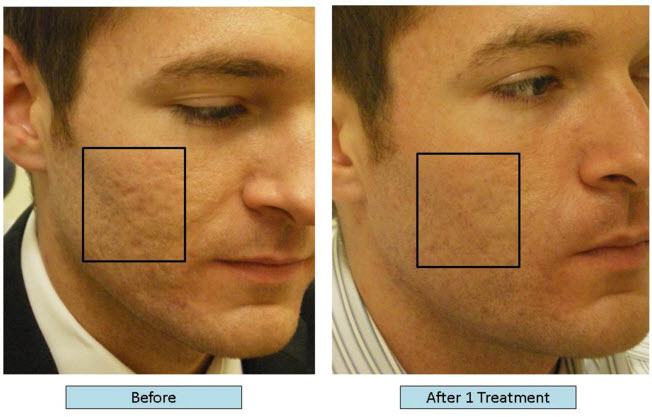Skin Rejuvenation Treatments: Renew Your Skin and Reduce Acne Scars
Checking Out Skin Disease: Dealing With and recognizing Acne Scars for Healthier Skin
Acne marks stand for a significant concern for individuals looking for to keep healthy skin, as they can affect both appearance and self-esteem. Comprehending the different kinds of scars, from atrophic to hypertrophic, is necessary for establishing suitable treatment choices.
Understanding Acne Scars

The body's all-natural healing procedure can lead to either atrophic marks, which show up as anxieties in the skin, or hypertrophic marks, which are increased and arise from overflow of collagen. In addition, the emotional toll of acne scars need to not be taken too lightly; several people report sensations of humiliation, anxiousness, and decreased self-esteem. This emotional worry can impact social interactions and total lifestyle.
Attending to acne scars calls for a thorough understanding of their formation and impact. Awareness of the capacity for lasting consequences connected with neglected marks can inspire individuals to seek ideal treatments. Early treatment and effective monitoring techniques can significantly boost skin look and enhance emotional resilience, highlighting the importance of understanding the intricacies bordering acne scars.
Kinds of Acne Marks
Acne scars can be classified right into unique types, each exhibiting distinct attributes and requiring certain therapy strategies. acne scars. The main kinds of acne scars consist of atrophic, hypertrophic, and keloid marks

Hypertrophic scars, in contrast, are increased over the skin degree and are the outcome of excessive collagen manufacturing during the healing process. They generally stay within the boundaries of the original acne lesion. Keloid scars are similar yet expand beyond the initial injury website, creating larger, raised areas that can be agonizing or itchy.
Understanding these kinds of scars is vital for choosing suitable therapy choices. Various marks might respond far better to specific treatments, such as laser treatments, fillers, or medical interventions, emphasizing the importance of a customized strategy to acne mark administration.
Determining Your Marks
Acne marks normally drop into 2 classifications: hypertrophic and atrophic marks. These can even more be identified into ice-pick scars, boxcar marks, and rolling marks, each displaying distinct features and requiring different techniques for evaluation.
Hypertrophic marks, on the various other hand, are increased and happen as a result of too much collagen manufacturing throughout the recovery procedure. Identifying the certain functions of your marks-- such as width, depth, and texture-- is essential for proper identification (acne and acne scars treatment). Furthermore, think about the distribution of scars throughout your skin, as this can show the extent and period of the acne problem
Involving with a skin doctor can supply important understandings into the nature of your scars, aiding in the distinction in between various kinds. A thorough understanding of view your marks will ultimately lead to a much more customized and reliable treatment strategy, making certain a clearer and much healthier skin tone.
Treatment Options Offered
Determining the certain sort of acne marks existing on your skin lays the groundwork for exploring effective treatment options. Typical kinds of acne scars include atrophic (clinically depressed), hypertrophic (raised), and post-inflammatory erythema.
For atrophic scars, alternatives such as chemical peels, microneedling, and laser resurfacing are extensively used. Chemical peels off make use of acids to eliminate the outer layer of skin, advertising new cell development.
Hypertrophic scars can be treated with corticosteroid injections to squash the scar or laser treatment to decrease inflammation and boost appearance. Silicone gel sheets and stress dressings might likewise help in managing elevated scars.
In addition, dermal fillers can momentarily fill out anxieties from atrophic marks, while surgical excision might be suitable for serious cases. Each therapy option has its benefits and considerations, making it important to seek advice from a skin doctor. They can give personalized referrals based upon the type and severity of your scars, along with your skin kind and overall health and wellness.
Tips for Avoidance
Effective prevention methods can substantially reduce the chance of developing acne marks. Using non-comedogenic items helps stop blocked pores, which can aggravate acne.
Avoiding need to pop or select acne lesions is essential, as this can cause deeper skin damage and increase the risk of scarring. Instead, think about making use of a cool compress or over-the-counter treatments to reduce swelling and soreness.
Sunlight defense is one get redirected here more vital aspect of avoidance; ultraviolet (UV) rays can dim scars and impede the healing procedure. Applying a broad-spectrum sunscreen with at the very least SPF 30 daily can secure the skin and advertise also healing.
Last but not least, keeping a well balanced diet rich in vitamins, anti-oxidants, and minerals supports skin health and wellness and recovery. Staying moisturized and managing stress degrees can also play a substantial function in minimizing acne flare-ups. By executing these methods, people can considerably minimize their chances of developing acne marks.
Final Thought
To conclude, understanding and recognizing acne marks is crucial for effective therapy and achieving much healthier skin. Various kinds of acne marks, including atrophic and hypertrophic scars, require details interventions tailored to private requirements. Therapy choices variety from chemical peels and microneedling to corticosteroid injections, highlighting the relevance of seeking advice from click here for info a dermatologist. In addition, embracing a mild skin care regimen and protecting the skin from UV direct exposure can considerably contribute to the prevention of more scarring and overall skin health.
The body's natural healing procedure can result in either atrophic scars, which show up as anxieties in the skin, or hypertrophic marks, which are raised and result from overproduction of collagen. They are more split right into 3 subtypes: ice pick marks, boxcar marks, and rolling marks. Acne scars usually fall right into two classifications: atrophic and hypertrophic scars. These can further be identified right into ice-pick marks, boxcar marks, and rolling marks, each displaying distinctive characteristics and requiring various strategies for analysis.
Different kinds of acne marks, consisting of atrophic and hypertrophic scars, necessitate certain interventions tailored to private needs.